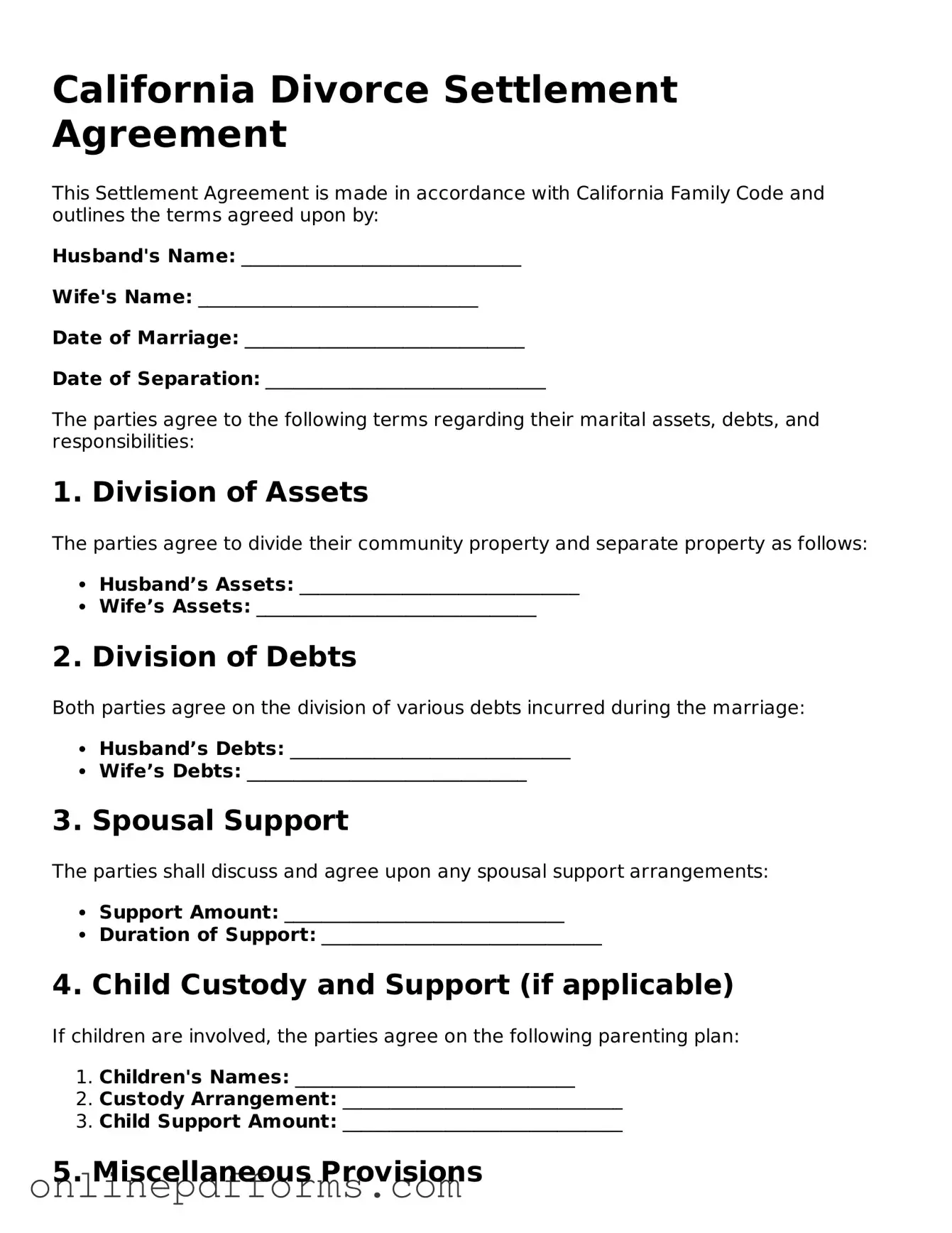The California Divorce Settlement Agreement form shares similarities with the Marital Settlement Agreement. Both documents outline the terms of a divorce, including asset division, child custody, and support obligations. They serve to formalize the agreements reached between spouses, ensuring that both parties understand their rights and responsibilities post-divorce. While the California form is specific to the state’s laws, the Marital Settlement Agreement is a broader term that can be used in various jurisdictions.
Another document akin to the Divorce Settlement Agreement is the Separation Agreement. This document is used when couples decide to live apart but are not yet ready to divorce. Like the Divorce Settlement Agreement, it addresses issues such as property division and child support. The key difference lies in the fact that a Separation Agreement can serve as a temporary measure, whereas a Divorce Settlement Agreement finalizes the divorce process.
Understanding the significance of a Last Will and Testament is vital for anyone looking to protect their assets. This legal framework helps ensure that your wishes are honored regarding the distribution of your estate. For further information, you can reference this essential Last Will and Testament form guide.
The Child Custody Agreement is also similar in that it focuses specifically on the welfare of children involved in a divorce. While the Divorce Settlement Agreement encompasses broader financial and property matters, the Child Custody Agreement hones in on parenting plans, visitation schedules, and decision-making authority. Both documents aim to protect the interests of children and provide a clear framework for co-parenting.
The Property Settlement Agreement is another related document. This agreement specifically details how marital assets and debts will be divided between spouses. While the Divorce Settlement Agreement includes property division, the Property Settlement Agreement may provide more granular detail on individual items and financial obligations, often serving as an attachment to the larger divorce settlement.
The Spousal Support Agreement is closely related as well. This document outlines the financial support one spouse will provide to the other following a divorce. Similar to the Divorce Settlement Agreement, it can specify the amount, duration, and conditions of support. Both agreements aim to ensure that financial needs are met post-divorce, though the Spousal Support Agreement focuses solely on this aspect.
A Prenuptial Agreement can also be compared to the Divorce Settlement Agreement. While a Prenuptial Agreement is created before marriage to outline asset distribution in the event of divorce, it can set the stage for the terms that might later be included in a Divorce Settlement Agreement. Both documents require clear communication and mutual consent regarding financial matters.
The Parenting Plan is another document that aligns with the Divorce Settlement Agreement. It specifically addresses the arrangements for raising children after a divorce, including custody, visitation, and parenting responsibilities. While the Divorce Settlement Agreement may include these elements, the Parenting Plan focuses solely on the child's best interests and the practicalities of co-parenting.
Lastly, the Final Judgment of Dissolution of Marriage is a legal document that follows the Divorce Settlement Agreement. This document officially ends the marriage and incorporates the terms agreed upon in the settlement. It serves as the final step in the divorce process, ensuring that all aspects of the Divorce Settlement Agreement are legally recognized and enforceable.
